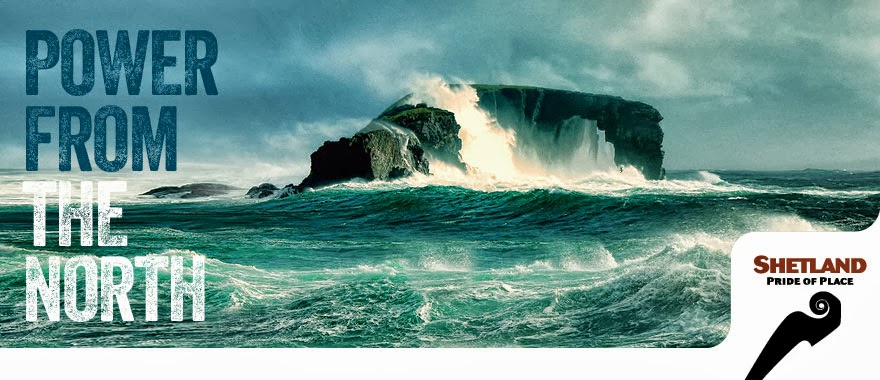A seabed tidal turbine off the island of Yell in Shetland has become the first in the world to feed electricity to a local grid. It will power 30 homes, an ice plant and a small industrial estate.
Full BBC story here: http://www.bbc.co.uk/news/uk-scotland-north-east-orkney-shetland-27490726
Wednesday 21 May 2014
Friday 16 May 2014
Viking Energy response to Government consultation on island wind power
|
Tuesday 13 May 2014
Isles could benefit from special wind farm classification
Shetland could benefit from UK Government proposals to classify renewable developments on Scottish island groups as a separate "technology group" to the rest of the onshore industry.
Consultation has begun on new proposals which could shield Shetland, Orkney and the Western Isles projects from mainland competition for allocations under the 'Contracts for Difference' system.
Full story here: http://renews.biz/66477/island-wind-freed-from-mainland-rivalries/
Full story here: http://renews.biz/66477/island-wind-freed-from-mainland-rivalries/
Labels:
incentives,
islands,
renewables,
Shetland,
wind,
wins farm
Tuesday 6 May 2014
Lerwick Harbour development continues with new jetty construction
The fishing industry will be the main beneficiary of the next major project in the continuing development of Lerwick Harbour where the construction of a large new jetty at Holmsgarth North is due to begin in the third quarter this year.
It will provide deeper berthing and more working area for the fishing fleet, while the outer arm of the L-shaped jetty will create a dock sheltering a planned new white fish market. The outer arm will also be suitable for offshore industry vessels.
Extending to over 630 metres, with ultimately 10 metres of water alongside, the Holmsgarth North project is scheduled for completion, at an estimated cost of £17 million, at end 2015.
It will be followed by the construction of the market, timetabled to start in early 2016 at Mair’s Quay. The quay was completed last year and has already brought benefits to the fleet. It will be the berthing area used for net repair and working with fishing gear during the construction of the large new jetty.
Sandra Laurenson, Lerwick Port Authority Chief Executive, said: “The commitment by the Port Authority to develop these next projects for the fishing industry will secure Lerwick as a leading fishing port in the UK and complement the excellent service provision for the fleet available here in Shetland. The main economic driver for this community is the marine sector and by meeting the requirements for fish landings in the future, that economy can flourish.”
The positive approach by the Port Authority is underlined by increased fish landings. Latest figures, for the first quarter, show a total of 32,577 tonnes landed, valued at £33.14 million, up 40% on tonnage and 57% on value compared to the same period in 2013.
Subscribe to:
Posts (Atom)

